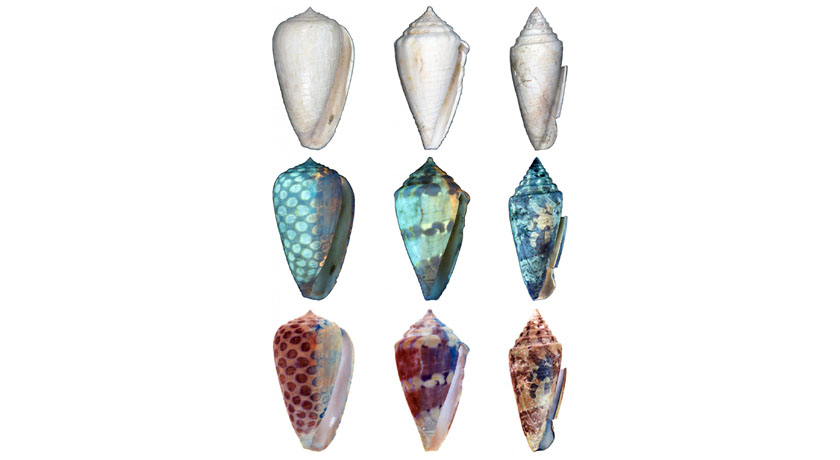Fossilized seashells’ true colors revealed

Under natural light, fossilized seashells appear devoid of color (top row). But under ultraviolet light, they appear bluish and patterns emerge (second row). Fluorescence hints at the presence of dark pigments, so reversing the UV images reveals what the shells probably looked like millions of years ago (third row).
Jonathan Hendricks






